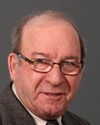Thank you, Mr. Chair.
As a survivor I would like to just underscore what has been said by my co-presenters, but I also think that peeling this onion, at some point you get to the core, and the core means dealing with our psycho-social problems. But it also suggests very strongly to me that not only am I dealing with the problem of the legacy of the residential schools, but my communities are. So then we have to think seriously about structural changes.
Structural changes have to involve the top, the people who in this room are parliamentarians. But it also has to involve catalysts like the Mental Health Commission and it has to involve the on-the-ground grassroots people. Seeing grassroots community-based on-the-ground approaches suggests to me always that there are other levels involved.
I just want to address a question you asked me previously, Mr. Chair, about what is going on between all the different levels of government to make sure that change is sustainable. That, to me, is structural change.
For those of you who know anything about the British Columbia initiative called the tripartite agreement, first nations, provincial governments, and the federal government are working together on health. They're really reframing health so that ultimately first nations will own and administer their own health programs. I think that's very promising. It's never been done anywhere before, and I think it's worth monitoring.





